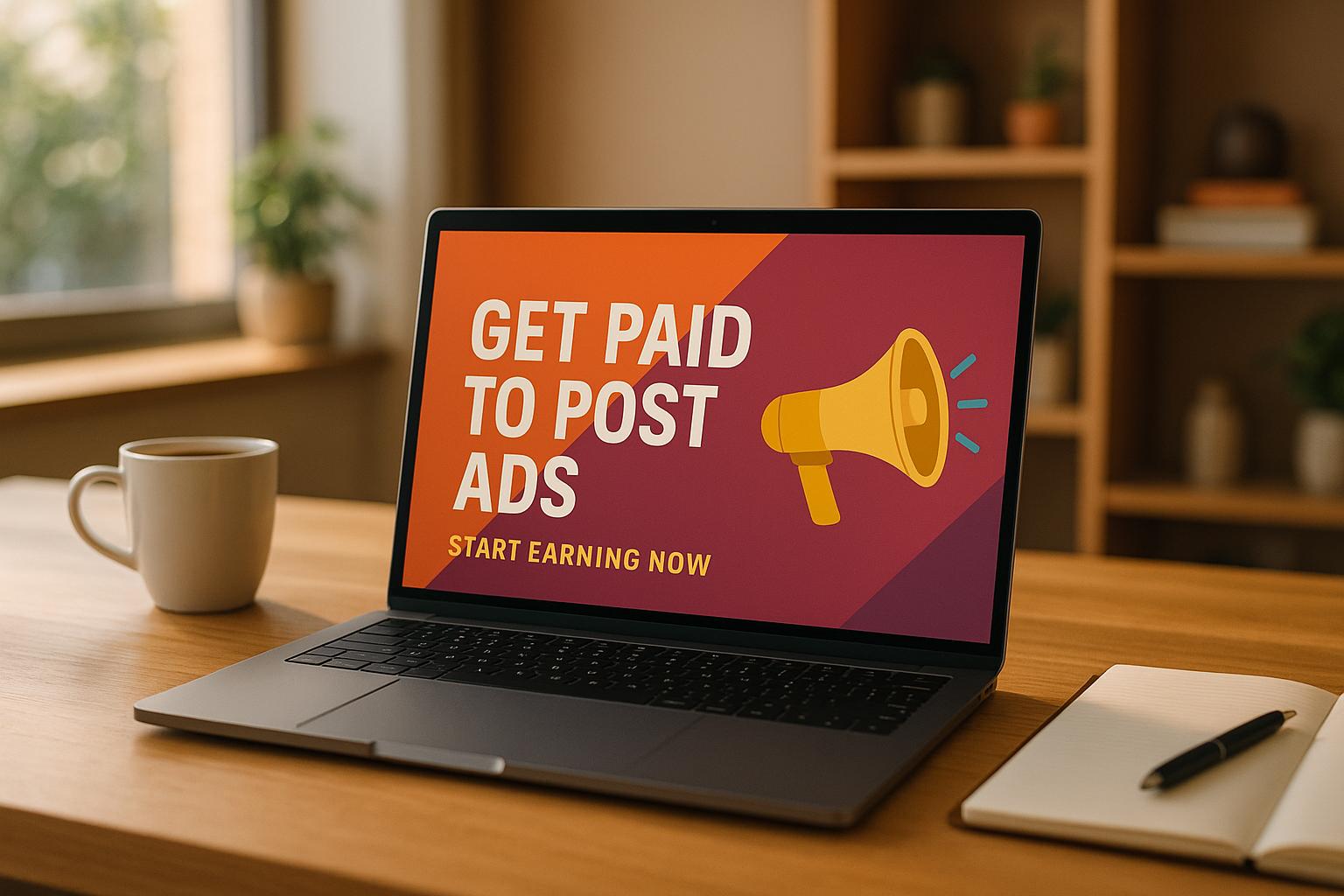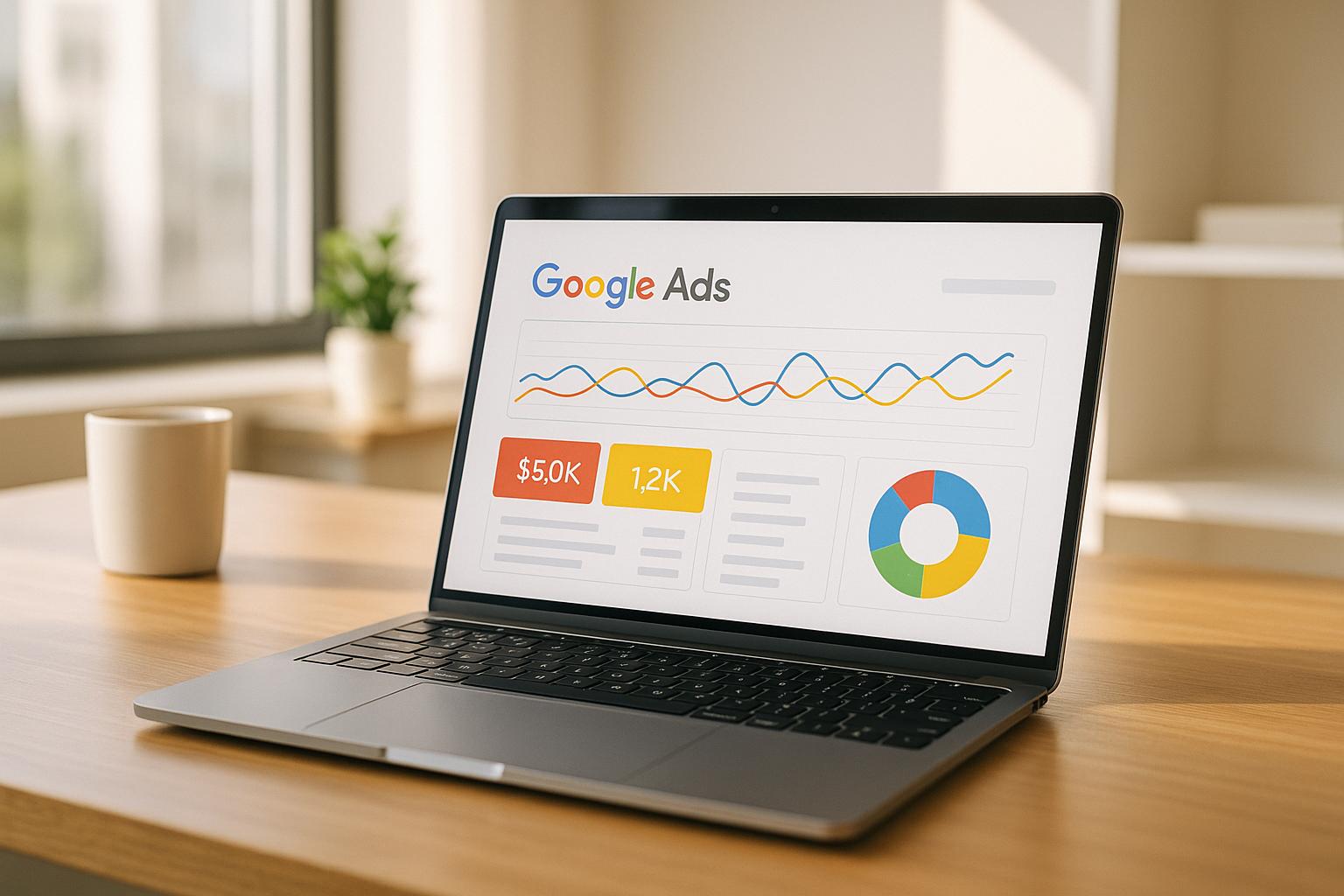Yes, exploring AdSense alternatives in 2025 is a smart move for publishers. Here’s why:
- AdSense struggles: Banner ad rates dropped 12% YoY, and Google suspended 1.4M accounts in 2024.
- Mobile-first world: 70% of visits now come from mobile, requiring adaptable monetization strategies.
- Niche advantage: Smaller, targeted audiences are highly valued by advertisers.
- Diverse options: Platforms like TinyAdz, Media.net, Ezoic, AdThrive, Monumetric, and AdMaven offer better revenue potential, flexibility, and transparency compared to AdSense.
Quick Overview of Platforms:
- TinyAdz: No traffic minimum, supports multiple channels like social media and newsletters.
- Media.net: Contextual ads for tier-1 audiences, $100 payout threshold.
- Ezoic: AI-powered optimization, $20 payout, no traffic minimums.
- AdThrive: Premium network for sites with 100k+ views/month, high CPMs.
- Monumetric: Entry at 10k views/month, balanced user experience and revenue.
- AdMaven: Pop ads, push notifications, and more for smaller publishers (2,500 visitors/day).
Key takeaway: Start with beginner-friendly platforms like TinyAdz or Ezoic, then scale up to premium options like AdThrive as your traffic grows. Diversifying beyond AdSense ensures sustainable and higher earnings in today’s evolving digital landscape.
12 Highest Paying Adsense Alternatives in 2024
1. TinyAdz
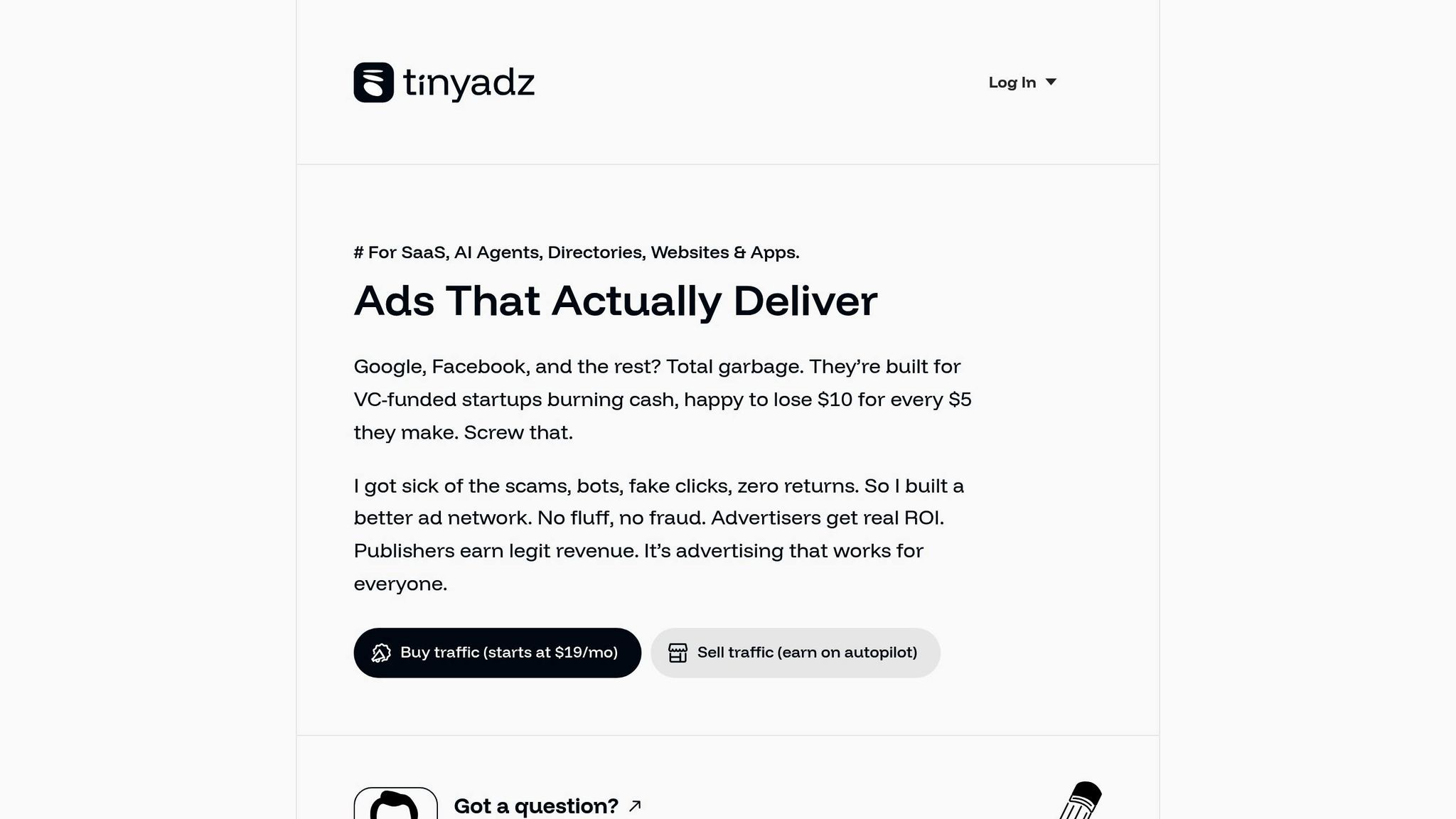
TinyAdz is an ad network designed to connect small, niche websites with advertisers who value highly engaged and specific audiences. Instead of relying on generic ad placements, the platform focuses on personalized matchmaking. It pairs publishers with advertisers based on audience compatibility and niche relevance, creating opportunities for better engagement and revenue growth for smaller sites.
Minimum Traffic
One standout feature of TinyAdz is that it doesn’t impose any minimum traffic requirements. This makes it an excellent option for publishers just beginning their monetization journey. In contrast, many other networks have high traffic thresholds - Raptive requires 100,000 monthly page views, while Monumetric starts at 10,000. TinyAdz levels the playing field by recognizing the value of smaller, highly engaged audiences.
Payout Threshold (USD)
TinyAdz offers flexible payout terms, providing smaller publishers with a steady income stream as they grow.
Ad Formats
TinyAdz goes beyond traditional banner ads, offering six diverse monetization options tailored to niche publishers:
- Banner Ads: Lightweight, performance-optimized designs.
- Directory Monetization: Ideal for websites with service directories, targeting users actively searching for specific services.
- All-Site Traffic Solutions: Covers your entire site to maximize earnings.
- Social Media Monetization: Helps you earn from your social media following while keeping content authentic.
- Newsletter Revenue: Monetizes email lists without compromising subscriber trust.
- Event Monetization: Perfect for publishers hosting webinars, conferences, or other events, connecting advertisers with highly targeted audiences.
Transparency in Reporting
TinyAdz provides a user-friendly dashboard that simplifies performance tracking. Publishers can easily see which ad formats and placements yield the best results. The platform also offers a quick and straightforward setup process, minimizing technical hurdles for niche publishers. This transparency and ease of use make TinyAdz a strong contender in the monetization space, especially for those looking for a comprehensive and accessible solution.
2. Media.net
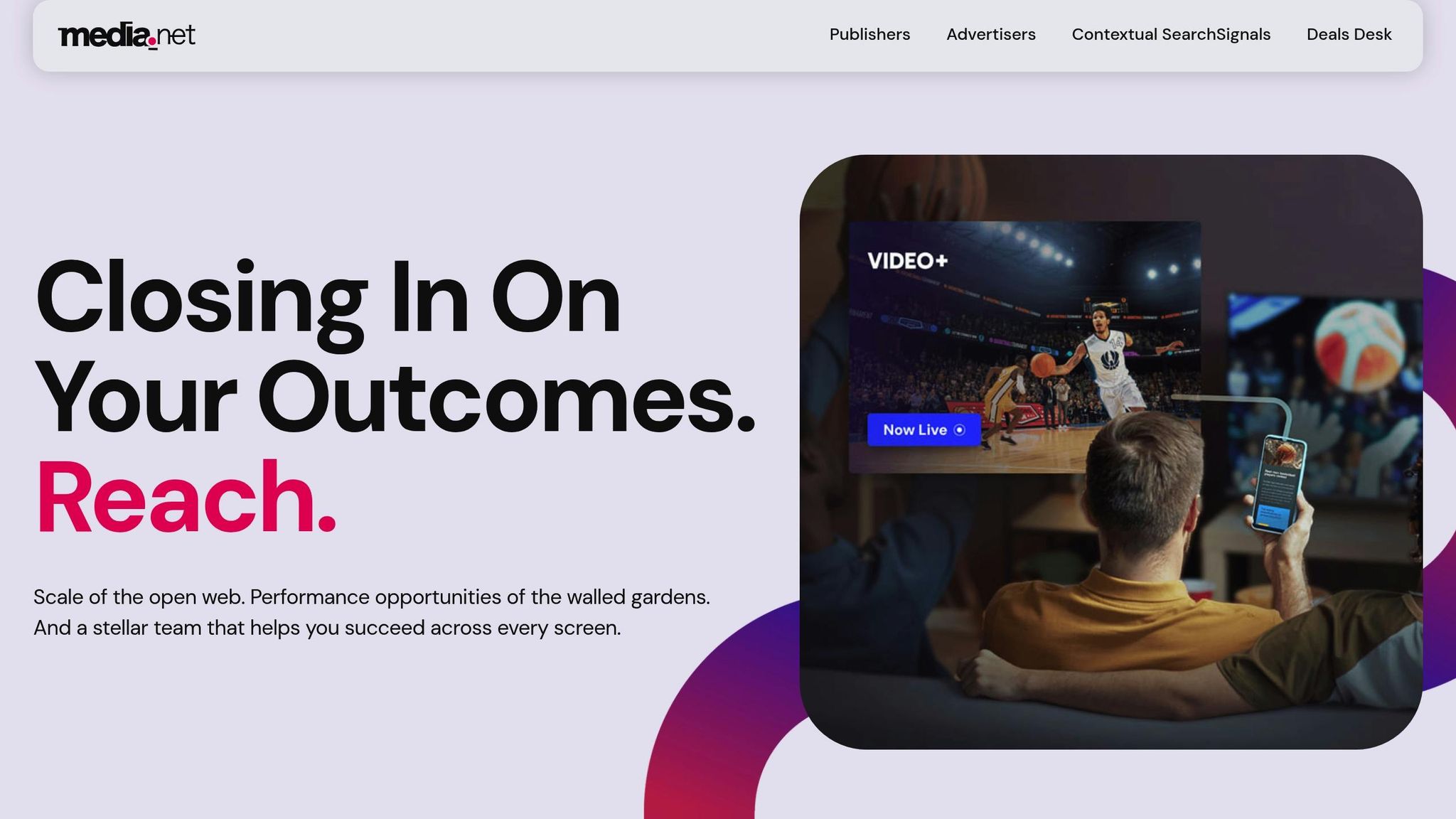
Media.net, powered by Yahoo! and Bing, is a contextual advertising network delivering millions of ad impressions every day across 500,000 websites. Its technology matches ads to keywords and phrases within a site’s content, making it an excellent choice for publishers targeting tier-1 audiences, particularly in the United States, Canada, and the United Kingdom. This emphasis on contextual targeting helps Media.net stand out from other ad networks.
Minimum Traffic
While Media.net doesn’t publicly share specific traffic requirements, it does prioritize publishers with a steady flow of visitors from tier-1 countries. Instead of focusing solely on pageviews, the platform evaluates the quality of a website’s content and its audience demographics during the approval process.
Payout Threshold (USD)
The payout threshold is set at $100 and payments are processed via PayPal or wire transfer on a NET 30 basis. CPM earnings typically range between $1.00 and $1.25, though rates can vary depending on the audience’s location and quality.
Ad Formats
Media.net provides a variety of ad formats that integrate seamlessly with website content. Options include image, text, and video ads, as well as banner and native ad formats. A standout feature is its display-to-search ad format, which targets keywords to better monetize search-driven traffic. The platform also allows publishers to customize ad units to match their site’s design, including colors and typography, which often leads to improved click-through rates. Additionally, Media.net’s contextual ads operate without relying on cookies, addressing privacy concerns and adapting to new regulations.
Transparency in Reporting
Media.net offers detailed reporting tools to help publishers monitor performance. However, its approval process is rigorous, favoring websites with high-quality traffic from English-speaking tier-1 markets like the United States, Canada, the United Kingdom, and Australia. Success on the platform often hinges on attracting traffic from these regions and creating content that naturally aligns with advertiser keywords and demand.
3. Ezoic
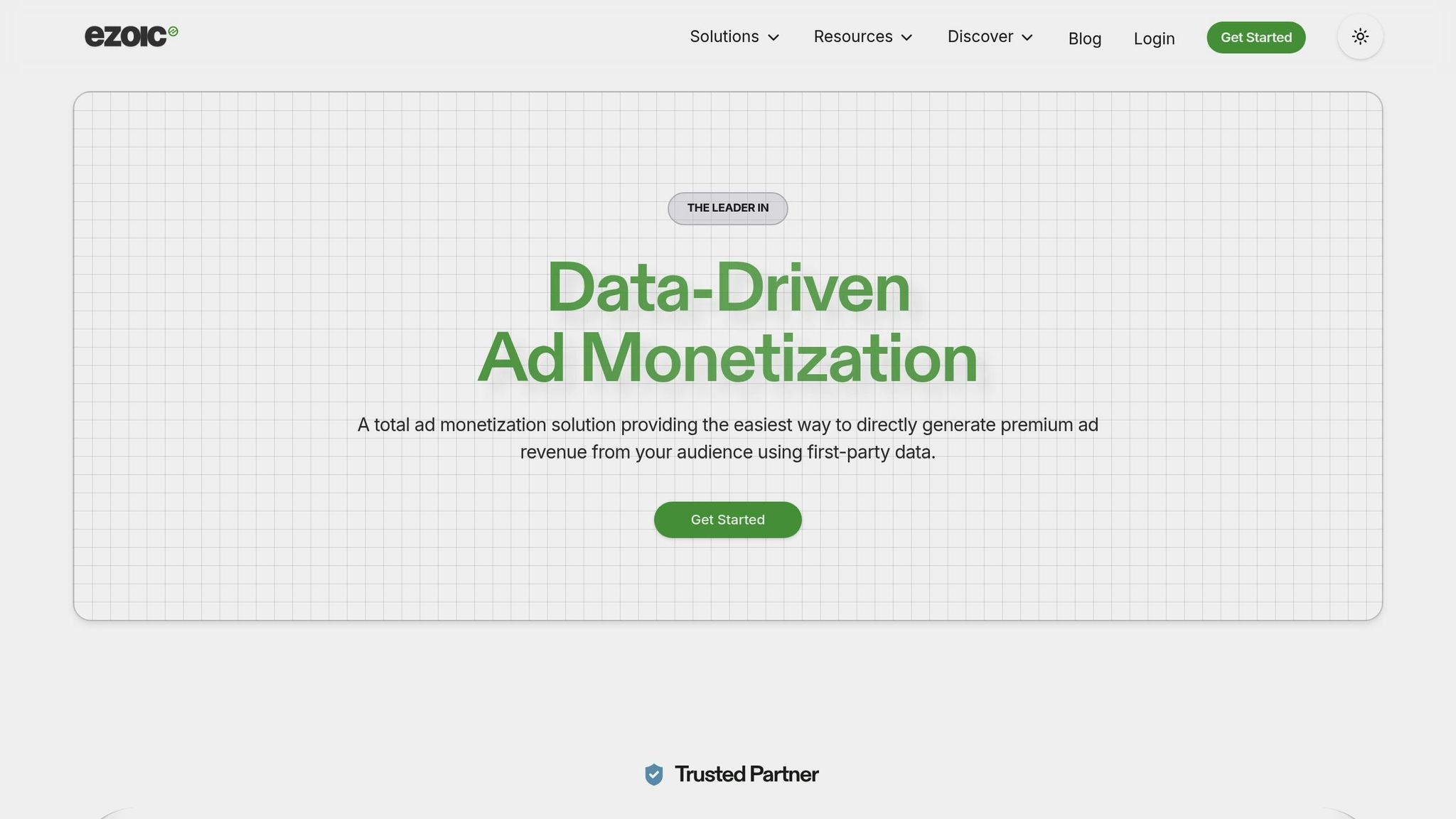
Ezoic builds on Media.net's contextual advertising approach by using AI to fine-tune ad placements and boost revenue, all while maintaining a positive user experience. The platform connects with multiple ad networks, including Google AdSense and AdX, giving publishers access to a wide variety of advertisers and ad formats. Let’s dive into how Ezoic stacks up in terms of traffic requirements, payouts, ad formats, and reporting tools.
Minimum Traffic
Ezoic stands out for its accessibility to smaller publishers. Unlike many premium ad networks that demand tens of thousands of monthly sessions, Ezoic doesn’t require publishers to hit a 10,000 monthly pageview minimum, making it a great option for those just starting out.
Payout Threshold (USD)
Ezoic offers a low payout threshold of just $20, allowing publishers to access their earnings without long delays. Publishers can also adjust their payout thresholds above this minimum, as long as changes are submitted by the 15th of the month to take effect for that pay period. Payments follow a net 30 schedule, with disbursements starting on the 27th of each month unless it falls on a weekend or holiday. Payment options include fee-free US bank transfers, PayPal (with a 4% conversion fee), and Payoneer. This flexibility makes it easier for niche publishers to manage their cash flow.
Ad Formats
Ezoic’s AI optimizes a range of ad formats, including anchor, native, sticky sidebar, vignette, and side rail ads. Anchor ads, for example, can increase earnings per thousand visitors (EPMV) by up to 60%. Meanwhile, native and vignette ads can boost revenue by 10–20% and deliver CPMs up to 200% higher than standard ad formats. AI-driven placeholders can further enhance earnings by 20%, and sticky sidebar ads typically improve EPMV by around 10%.
"Native ads have 200% higher CPMs than standard banner ads. User engagement is 2x higher. User retention is 3x. In 2020, 63.2% of mobile display advertising was native, making up $53.4 billion in ad revenue." - Kevel
Transparency in Reporting
Ezoic provides detailed analytics tools that track key metrics and help publishers fine-tune their monetization strategies in real time. Beyond revenue reporting, the platform includes features like advanced caching, image optimization, and a content delivery network (CDN) to improve site performance. These tools make it easier for publishers to understand how their monetization strategies impact site speed and user experience. Additionally, Ezoic’s audience segmentation tools allow publishers to create tailored ad experiences for different visitor groups, helping them make smarter decisions about how to maximize revenue.
4. AdThrive
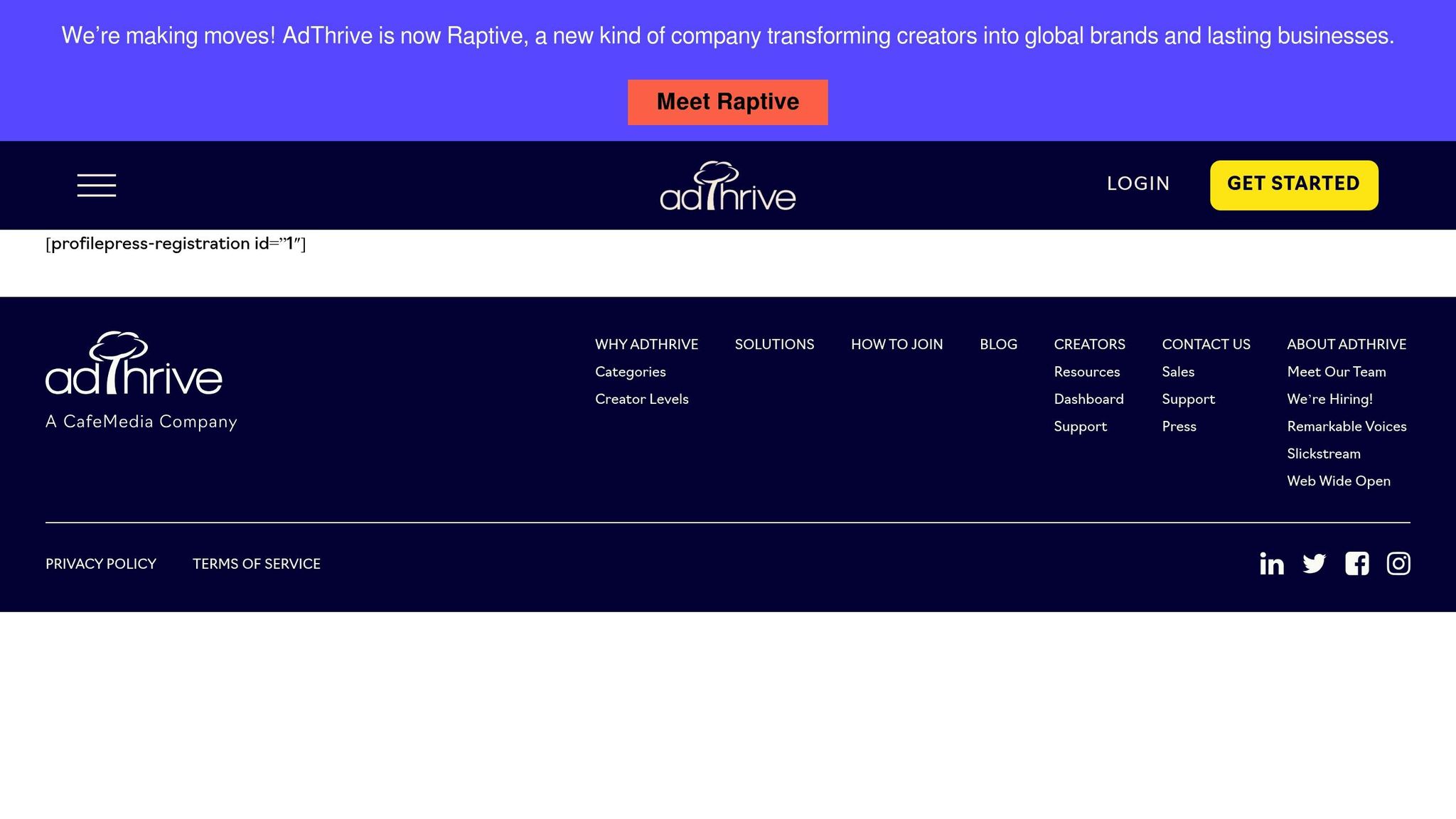
AdThrive is a premium ad network designed for publishers aiming to maximize revenue while maintaining a strong user experience. By leveraging direct relationships with advertisers and advanced technology, AdThrive ensures optimized ad placements and competitive earnings. Let’s break down its key requirements and features.
Minimum Traffic
To qualify for AdThrive, publishers need at least 100,000 monthly pageviews, with a focus on traffic from tier-one countries like the United States, United Kingdom, Canada, Australia, and New Zealand. For those with multiple sites, secondary sites only need 30,000 monthly pageviews if the primary site meets the full requirement. Additionally, members of AdThrive’s Platinum program benefit from waived traffic minimums for new sites. These thresholds help ensure publishers can achieve strong earnings through the platform.
Payout Threshold (USD)
AdThrive has a $25 payout threshold for most payment methods, while wire transfers require a minimum of $100 in most countries. Payments are processed through Tipalti on a net-45 schedule - for example, earnings from July are paid on September 15.
For U.S. publishers, fee-free payment options include direct deposit (ACH), eCheck, or PayPal. International publishers should be aware of a 2.5% currency conversion fee for non-USD payments through Tipalti. Wire transfers come with fees: $15 for domestic transfers and $25 for international transfers.
Ad Formats
AdThrive supports a variety of ad formats, including display, video, and native ads, all optimized by its proprietary systems, Nucleus and Marmalade. To maintain a positive user experience, AdThrive limits ads to 30% of page content. Direct advertiser campaigns can significantly boost earnings, often paying 2–3 times more than standard programmatic ads. Publishers have reported RPM increases of around $20 and revenue growth of 20% from these campaigns.
"Advertisers know and trust the quality of sites they find in the AdThrive community, so we work hard to maintain the standards that keep earnings as high as possible for every AdThrive publisher!" - AdThrive Rep
AdThrive also handles full-service ad management, taking care of layout, placement, and optimization so publishers can focus on creating content. Its use of header bidding technology further enhances revenue potential. For video ads, publishers are required to upload their content directly to AdThrive’s platform.
Transparency in Reporting
AdThrive goes beyond basic revenue metrics by offering detailed reporting on direct campaigns, ad viewability, and user engagement. Dedicated account managers provide regular updates, sharing valuable insights on revenue opportunities and industry trends. This level of communication helps publishers make smarter choices about their content strategies and maximize their earning potential.
sbb-itb-957fd63
5. Monumetric

Monumetric is a publisher-focused ad network that prioritizes both user experience and revenue growth. It also pays close attention to enhancing site speed, design, and navigation, making it a well-rounded choice for publishers. Let’s dive into how Monumetric’s ad formats strike this balance.
Ad Formats
Monumetric supports various ad types, including display, video, and native ads. It provides publishers with tools to optimize ad placements, ensuring maximum visibility and engagement. On average, publishers can expect an RPM (revenue per thousand impressions) ranging between $5 and $8.
To make the most of Monumetric’s offerings, consider placing ads strategically in high-visibility areas like above-the-fold, within content, or near call-to-action buttons. Sticky ads and in-content ads can also help increase revenue. Additionally, ensure your website is mobile-friendly and experiment with different ad configurations to identify what works best for your audience.
Transparency in Reporting
Monumetric includes an analytics dashboard, allowing publishers to monitor performance continuously and make informed decisions to improve results.
6. AdMaven

AdMaven opens up more opportunities for publishers to monetize their websites, especially those with modest traffic. This digital ad network handles over 2 billion daily impressions and offers automatic approval based on traffic volume. It’s an appealing choice for smaller publishers eager to generate revenue from their content.
Minimum Traffic Requirements
AdMaven sets its entry threshold at 2,500 visitors per day, making it accessible to many publishers. The approval process is quick and straightforward, and even sites with fewer than 10,000 daily views often find success on the platform.
Ad Formats
AdMaven provides a variety of ad formats designed to maximize earnings. These include:
- Pop ads
- Push notifications
- In-page push ads (floating banners)
- Interstitial ads
- Content lockers and link shorteners
- Smartlinks and direct link ads
The platform tailors its solutions to meet the specific needs of publishers, ensuring flexibility and alignment with revenue goals. For instance, one publisher using Popunder and Push ads reported daily earnings of $20–$25. Another case study highlighted a publisher who implemented Smart Links on Facebook pages, resulting in a CPM jump from under $1 to over $5. These examples underline the platform’s focus on performance-driven results.
Reporting and Transparency
AdMaven emphasizes transparency in its reporting. The platform provides hourly updates on ad performance data, allowing publishers to monitor results in real time and make quick adjustments. While the reporting interface lacks visual tools like graphs, its simplicity makes it easy to navigate and analyze performance. This straightforward system empowers publishers to make informed decisions about ad placements and formats, helping them optimize their revenue streams effectively.
Platform Strengths and Weaknesses
Each ad platform comes with its own set of perks and drawbacks, which can significantly impact your monetization strategy. By weighing these factors, you can identify the platform that best suits your traffic levels and publishing goals. Here's a closer look at how some popular platforms stack up:
| Platform | Key Strengths | Main Weaknesses |
|---|---|---|
| TinyAdz | No minimum traffic requirements; Hyper-targeted niche matching; Supports multiple monetization channels (websites, social media, newsletters, events) | - |
| Media.net | Strong contextual targeting; Access to Yahoo-Bing search demand; $100 minimum payout with NET 30 terms | Requires 10,000 pageviews/month; Limited to specific geographic markets |
| Ezoic | No traffic minimums; Low $20 payout threshold; AI-powered optimization; NET 30 payment schedule | Steep learning curve for optimization features; Revenue depends on testing phases |
| AdThrive | High CPMs for sites with significant traffic; Dedicated account management; Flexible payment options | Requires 100,000 pageviews/month; Highly selective approval process |
| Monumetric | Lower entry point with a 10,000 pageviews/month requirement; Tiered service levels; Offers payment via Payoneer and PayPal | NET 60 payment terms lead to delayed earnings |
This breakdown highlights the trade-offs each platform offers, helping you align your choice with your site's current and future needs.
Traffic requirements are a major consideration, especially for smaller publishers. Platforms like TinyAdz and Ezoic, which have no traffic minimums, are more accessible for beginners. On the other hand, premium networks such as AdThrive demand higher traffic levels but offer increased revenue potential - premium networks can reportedly boost revenue by as much as 57%.
Payment terms also vary widely. For example, Ezoic's $20 minimum payout makes it appealing for smaller publishers, while Monumetric's NET 60 terms mean longer waits for earnings compared to NET 30 schedules offered by others.
Approval processes differ significantly as well. Some platforms, like TinyAdz, allow for quick onboarding, while others, such as AdThrive, involve a more rigorous, multi-week review process. This reflects the balance between fast monetization for smaller publishers and higher earnings for those willing to meet stricter criteria.
Geographic limitations also play a role. While Media.net is particularly beneficial for U.S. and U.K. audiences, other platforms offer broader international reach, making them more versatile for publishers with diverse traffic sources.
For small publishers, starting with platforms like TinyAdz or Ezoic can provide immediate monetization opportunities. As traffic grows, transitioning to premium networks like AdThrive or Monumetric could unlock higher revenue potential. By understanding these strengths and weaknesses, publishers can strategically plan their monetization journey and optimize earnings at every stage of growth.
Final Recommendations
To make the most of your monetization strategy, it’s crucial to align your choice of platform with your goals and traffic levels. AdSense alternatives are becoming increasingly attractive for U.S. publishers in 2025, offering greater flexibility, higher revenue potential, and diversified income streams. With global digital ad spending expected to hit $513 billion by the end of 2025, publishers have a wealth of opportunities - if they choose the right platforms.
For new or niche publishers, platforms like TinyAdz are a great starting point. TinyAdz excels at matching ads to specific audiences, enabling monetization across various channels like websites, social media, and newsletters, even without high traffic volumes.
If you’re in the small to medium growth stage, Media.net is worth considering, particularly if your audience skews heavily toward U.S. and Canadian traffic. Mark McShane, Founder of Cupid PR, highlights its effectiveness:
"I use Media.net for contextual ads, which work well for my US and Canadian traffic. Powered by the Yahoo Bing Network, Media.net's ads are highly relevant to the content on my sites and get higher engagement and click-through rates."
Media.net is especially appealing for content-heavy sites, as it often delivers higher RPMs compared to other networks.
For publishers managing high-traffic sites, premium platforms like AdThrive can be game-changers. David Nahmani, Author and Owner of Logic Pro Help, shares his experience with AdThrive:
"I determined that AdThrive is the best because it only works with high-traffic sites like mine (100k+ monthly visits). I can contact them, talk to a human, and have them tune the ads however I like, page by page. I keep a highly professional look on my website. All ad formats are non-intrusive and follow best practices."
AdThrive and similar premium networks are designed to cater to publishers with substantial traffic, offering personalized ad optimization and a professional, user-friendly ad experience.
Another critical consideration is revenue share. While AdSense retains 32% of display ad revenue, some alternatives take as little as 20%. This difference can significantly boost earnings, especially as AdSense policies and CPC rates remain unpredictable.
For publishers in lucrative niches like insurance, law, health and fitness, real estate, or cybersecurity, specialized ad networks can deliver even better results. Some platforms claim to increase revenue by at least 30% compared to AdSense, with others helping publishers achieve gains of 50–300%.
Advanced technical features are also a major draw for AdSense alternatives. Platforms like Ezoic use AI-driven testing to optimize ad placements, while others employ header bidding to maximize competition for ad slots. These tools not only enhance revenue but also maintain a smooth user experience.
Finally, many AdSense alternatives excel in transparency and support. Dedicated account managers and responsive customer service give publishers more control over their strategies - areas where AdSense often falls short.
In 2025, diversifying beyond AdSense is no longer just a good idea - it’s essential. Start by selecting platforms aligned with your current traffic levels, rigorously test their performance, and scale up to premium options as your audience grows. With better revenue shares, advanced tools, and superior support, these alternatives offer a clear path to maximizing your earnings.
FAQs
What should I consider when deciding if TinyAdz or other AdSense alternatives are right for my website?
When you're weighing TinyAdz or other AdSense alternatives, the first thing to look at is your website's traffic volume. Some platforms set minimum visitor thresholds, so make sure your audience size aligns with their requirements.
Next, dive into the potential earnings. Pay attention to metrics like CPM (Cost Per Thousand Impressions) and CPC (Cost Per Click), as these numbers can vary depending on your niche and how engaged your audience is.
The user experience should also be a top priority. Opt for platforms that offer ads that are non-intrusive, so you can maintain your visitors' trust and satisfaction. Nobody likes a cluttered or annoying ad experience.
Lastly, consider the ease of integration. Look for platforms that are simple to set up and offer reliable customer support to help with any issues or to fine-tune your ad performance. Keeping these factors in mind can help you boost your revenue without sacrificing the quality of your site.
How do platforms like TinyAdz help smaller publishers monetize their content effectively, even with low traffic?
Platforms such as TinyAdz cater specifically to smaller publishers, offering a way to monetize their websites without needing high traffic numbers. This makes it possible to start generating income immediately, even if your site or audience is just getting off the ground.
With TinyAdz, you can dive into ad optimization techniques, monitor performance from the start, and steadily grow your revenue as your traffic increases. The platform also provides helpful tools and resources aimed at boosting ad earnings, making it a great option for anyone aiming to establish a reliable income stream with minimal traffic.
What are the benefits of using AI-powered tools like Ezoic, and how can they improve my ad revenue and website experience?
AI-powered platforms like Ezoic bring a host of benefits when it comes to increasing ad revenue and improving the overall user experience. These tools rely on artificial intelligence to study visitor behavior and fine-tune ad placements automatically. By experimenting with various ad formats and positions, they aim to strike the perfect balance - boosting revenue while keeping ads relevant and engaging for your audience.
Beyond just revenue growth, these tools also enhance the browsing experience by reducing intrusive ads and maintaining a clean, easy-to-navigate design. They evolve with changing preferences and trends, ensuring your site remains optimized for both performance and user satisfaction. This blend of smarter ad strategies and a seamless user experience makes AI-powered tools an essential resource for website monetization.
